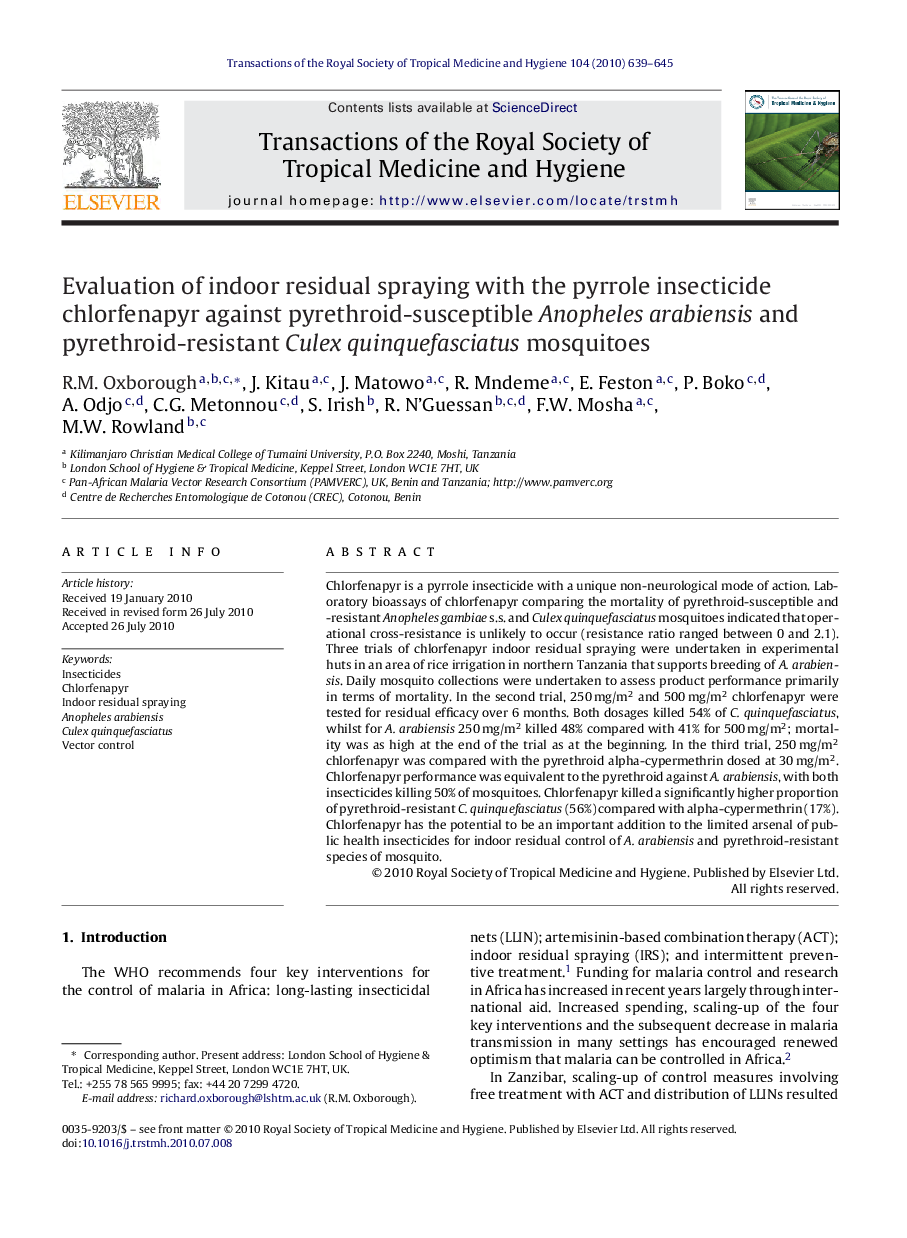| Article ID | Journal | Published Year | Pages | File Type |
|---|---|---|---|---|
| 3420601 | Transactions of the Royal Society of Tropical Medicine and Hygiene | 2010 | 7 Pages |
SummaryChlorfenapyr is a pyrrole insecticide with a unique non-neurological mode of action. Laboratory bioassays of chlorfenapyr comparing the mortality of pyrethroid-susceptible and -resistant Anopheles gambiae s.s. and Culex quinquefasciatus mosquitoes indicated that operational cross-resistance is unlikely to occur (resistance ratio ranged between 0 and 2.1). Three trials of chlorfenapyr indoor residual spraying were undertaken in experimental huts in an area of rice irrigation in northern Tanzania that supports breeding of A. arabiensis. Daily mosquito collections were undertaken to assess product performance primarily in terms of mortality. In the second trial, 250 mg/m2 and 500 mg/m2 chlorfenapyr were tested for residual efficacy over 6 months. Both dosages killed 54% of C. quinquefasciatus, whilst for A. arabiensis 250 mg/m2 killed 48% compared with 41% for 500 mg/m2; mortality was as high at the end of the trial as at the beginning. In the third trial, 250 mg/m2 chlorfenapyr was compared with the pyrethroid alpha-cypermethrin dosed at 30 mg/m2. Chlorfenapyr performance was equivalent to the pyrethroid against A. arabiensis, with both insecticides killing 50% of mosquitoes. Chlorfenapyr killed a significantly higher proportion of pyrethroid-resistant C. quinquefasciatus (56%) compared with alpha-cypermethrin (17%). Chlorfenapyr has the potential to be an important addition to the limited arsenal of public health insecticides for indoor residual control of A. arabiensis and pyrethroid-resistant species of mosquito.
